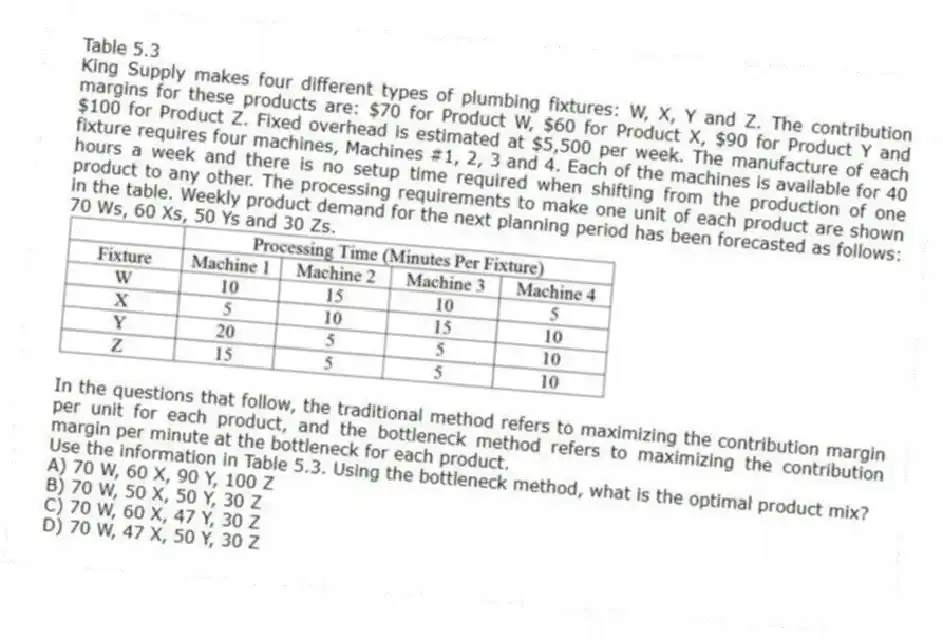
Table 5.3
King Supply makes four different types of plumbing fixtures: W, X, Y and Z. The contribution margins for these products are: $70 for Product W, $60 for Product X, $90 for Product Y and $100 for Product Z. Fixed overhead is estimated at $5,500 per week. The manufacture of each fixture requires four machines, Machines #1, 2, 3 and 4. Each of the machines is available for 40 hours a week and there is no setup time required when shifting from the production of one product to any other. The processing requirements to make one unit of each product are shown in the table. Weekly product demand for the next planning period has been forecasted as follows: 70 Ws, 60 Xs, 50 Ys and 30 Zs.

In the questions that follow, the traditional method refers to maximizing the contribution margin per unit for each product, and the bottleneck method refers to maximizing the contribution margin per minute at the bottleneck for each product.
-Use the information in Table 5.3. Using the bottleneck method, what is the optimal product mix?
A) 70 W, 60 X, 90 Y, 100 Z
B) 70 W, 50 X, 50 Y, 30 Z
C) 70 W, 60 X, 47 Y, 30 Z
D) 70 W, 47 X, 50 Y, 30 Z
Correct Answer:
Verified
Q92: Which of the following statements concerning line
Q93: Paced lines require that inventory storage areas
Q94: Line balancing applies only to line processes
Q95: What is the definition of "theoretical maximum
Q96: A line that produces several items belonging
Q98: Line balancing strives to create workstations so
Q99: What is contribution margin for a product?
Q100: A line balance that is 100% efficient
Q101: Figure 5.4 Q102: Table 5.6
![]()
Balance the following line for an
Unlock this Answer For Free Now!
View this answer and more for free by performing one of the following actions

Scan the QR code to install the App and get 2 free unlocks

Unlock quizzes for free by uploading documents